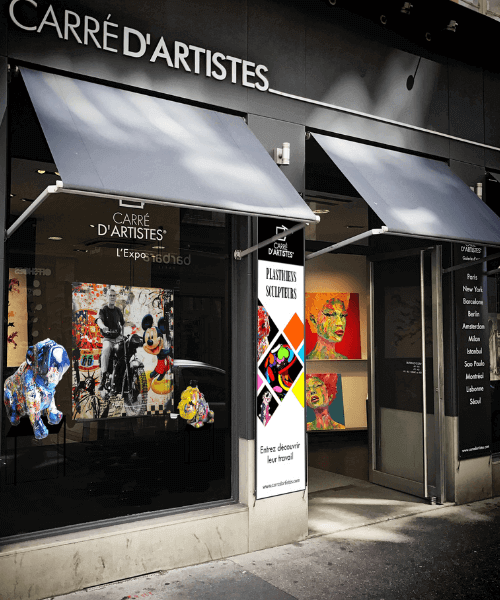History of contemporary art
Contemporary art marks a stylistic revival with an expansion of modes of expression and artistic techniques.
Mainly affecting the field of visual arts, contemporary art rejects the codes of classical and modern art.
In what context was contemporary art born?
How to choose a contemporary artwork? Here is a brief history of contemporary art.
Summary
- The criteria for defining contemporary art
- The emergence of contemporary art
- Experimentation at the heart of contemporary art
- The primordial role of photography
- Contemporary art from the 1980s
- The new mediums of contemporary art
- Contemporary art in museums and art galleries
Contemporary art calls out
Contemporary art marks a desire of artists to break with the codes of figurative art.
Contemporary art seeks new forms of expression.
Contemporary artists question, criticize and reveal reality with its contradictions.
Contemporary art brings together new art forms such as conceptual art, pop art or street art.
The notion of contemporary art from a historical point of view
The primary definition of contemporary art is a historical notion.
Contemporary art is the collection of works of art created since 1945 in Paris, London or New York.
Contemporary art thus encompasses all works created during this period, regardless of the style, the medium used or the artistic movement to which they belong.
Contemporary art succeeds the modern art initiated by the Impressionists which refers to the artistic period from 1850 to 1945.
This is the definition of contemporary art favored by museums and art galleries.
The notion of contemporary art from the point of view of simultaneity
Another definition of contemporary art is that which considers that this art brings together all the artistic works that are created today.
The definition of “contemporary art” cannot therefore be taken in a strict chronological sense.
Not all contemporary artistic productions belong to contemporary art.
The criteria for defining contemporary art
What defines contemporary art is its desire to break free from classical art, fine art and modern art.
Art critics and institutions play a central role in trying to define what contemporary art is.

1.png)
The emergence of contemporary art
The artistic movements that appeared after 1945 are part of contemporary art.
Marked by a stylistic renewal, the use of new technologies, contemporary art is based on the experiments of modern art from the beginning of the 20th century. Contemporary art is gradually losing its representative functionality.
Art reflects the crises of society and remains a place of expression of values.
Contemporary artists wish to express their opinion outside institutional frameworks in order to speak directly to the public.
However, contemporary art asserted itself as such from the 1960s with the emergence of pop art, an artistic movement in radical departure from modern art.
His main source of inspiration is the excesses of consumer society in industrialized countries.
Experimentation at the heart of contemporary art
.Contemporary art takes advantage of the modern art that precedes it by using the new creative techniques at its disposal.
Contemporary artists go further in the experimentation initiated by modern artists at the beginning of the 20th century.
This new artistic style tends to abandon the reality idealized by modern art.
Thanks to photography, contemporary art explores new concepts and leads to new experiments.
Contemporary art is becoming a form of expression that reflects the crises in society and reality as perceived by artists.
The primordial role of photography
The advent of photography in the 19th century has a direct influence on contemporary art and the way in which reality is portrayed.
A photograph captures reality better than a painting or a sculpture.
From then on, contemporary art broke with traditional fine arts techniques to become a committed means of expression.
Contemporary art from the 1980s
Technology made its appearance in contemporary art from the 1980s: video art, digital art, etc.
The Internet plays an increasingly important role in the dissemination and mediation of contemporary art upstream of exhibitions.
The new mediums of contemporary art
In addition to classic mediums, contemporary art explores new mediums: concrete, polystyrene, silicone, plastic, environment, mechanical systems, etc. The ephemeral vocation of certain contemporary artistic works questions the very notion of medium which often becomes a vector of mediation rather than a stable medium. Contemporary art considers the notion of mediums insufficient to describe the cultural and artistic realities of society today.
Contemporary art in museums and art galleries
Contemporary art in museums and art galleries
There are many museums and art galleries dedicated to contemporary art in Europe and around the world.
In France, several museums exhibit works of contemporary art by great masters or contemporary artists who have come to make a name for themselves in the art market.
The private galleries also exhibit contemporary art.
Complementary articles
On the subject:
Choose a contemporary artwork
find out more :
- What is contemporary art?
- Currents of contemporary art
- Well-known contemporary artists
- Difference between modern art and contemporary art







